ATV Albert Einstein is loaded and ready for its launch, 5 June. The pressurised module was leak-tested and the last of its late cargo was loaded the week before.
Engineers will go over the last details such as adding the protective shielding for launch and removing the ‘remove before flight’ tags as Arianespace encloses the spacecraft in the launcher fairing.
And here at the blog, it’s time for an overview of the cargo that ATV-4 will bring to the International Space Station.
ATV-4 boasts the most dry cargo ever loaded in the spacecraft series – and the most cargo added just weeks before launch, both in terms of weight and volume.
Despite this, ATV-2 still holds the record for most supplies transported by weight and it is likely to hold on to that record. ATV-2 was launched with only six cargo racks of dry cargo instead of a possible eight, so the mass saved in dry cargo could be used to fill the fuel tanks with more propellant.
ATV-4 is configured to hold six large, M-01 bags and eight triple-sized Cargo Transfer Bags (CTBs) for late cargo loading.
New lift – new capabilities
ATV-4 was the first time the new Late Cargo Access Means (LCAM) was used to load late cargo.
The LCAM is a lift that allows operators to access ATV through the hatch astronauts will use on the Space Station, even when the spacecraft is in its vertical launch position. The hatch is only 80 cm in diameter, and the operators have to be lowered through the opening into position.
The new LCAM has a rotating crown ring that can fully rotate the platform for better access to the cargo racks. The platform on which the operator stands is telescopic in three directions to allow for more manoeuvring space to install bulky cargo.
The new LCAM also has a telescopic handling arm to support heavy bags and make cargo installation easier. Previously, late loading was limited to 25-kg bags, but the new handling arm can handle bags up to 75 kg.
In addition, the bags that can be loaded are about 25 cm longer than the maximum bag size in the past due to the handling arm and the larger operator platform. The new handling arm even allows for cargo to be installed on the front rack adapter plates, a first for ATV-4.
These new developments have allowed 218 kg more dry cargo to be loaded on ATV-4 that could never have been loaded in the previous ATVs.
But what are the highlights of Albert Einstein’s cargo?
Late cargo loading
Kirsten MacDonell, ESA’s ATV Cargo Integration Engineer at ESTEC, The Netherlands, is quick to point out the Fundamental and Applied Studies in Emulsions Stability (FASES) experiment that ESA astronaut Luca Parmitano will run.
Emulsions – suspended droplets in a liquid – are everywhere on Earth, from salad dressings and mayonnaise to creams and ointments. Studying the physics of emulsions on Earth is problematic as gravity pulls them apart and gets in the way of scientific readings.
Albert Einstein will carry a seemingly unimpressive box with FASES experiments. Only 40x28x27 cm, it holds a conveyor and 44 sample containers filled with liquids. Once in space, the containers will move over the conveyor and pass through a microscope to analyse the contents of extremely pure water, paraffin and hexane.
As the emulsions are unstable, the experiment needs to be run within two months, which is why this cargo was installed as part of the late cargo load.
Other highlights of the late cargo load include food for the energy experiment that will put Luca on a strict diet to monitor his food needs in space. Happily, ATV Albert Einstein will also bring the astronauts their so-called ‘bonus food’ that they chose themselves before launch.
Another science supply that was added to the cargo is a new microscope for the Biolab science rack in the Columbus module. A cooling servicer for Columbus will also be part of the shipment for ESA’s space laboratory.
An interesting item in ATV-4’s cargo roster is a 3D printed toolbox that was specially conceived for use in space.
Each surface of this toolbox will be able to hold various astronaut tools. The lightweight box is too fragile to support the tools during the stresses of launch so they are sent separately. An astronaut will have a few fascinating moments collecting the tools and putting them in their new home, a 3D-printed space toolbox.
Large cargo
One of the heavier items ATV-4 will be carrying is a spare water pump unit for ESA’s Columbus module.
The unit weighs 80 kg and is bolted directly onto ATV’s cargo racks, bypassing the bag system used so far. An interface plate was developed to fix the pump directly to the ATV rack front adapter plates so that it will be launched into space hard-mounted in a similar configuration to how the original pump was launched in 2008. Five years ago it was installed in the Columbus module and launched on Space Shuttle Atlantis.
As the pump unit was built to withstand launch vibrations when it was installed in the Columbus module, installing the spare unit on ATV in the hard-mounted configuration eliminated the need for testing in a new launch configuration. During the original launch, the pump contained fluids that expand as the air pressure changes. Pipes have been fitted to the spare on ATV-4 with a reservoir to allow for the fluids to expand.
“We have always said that ATV could launch cargo fitted in this way but this is the first time we are actually doing it,” says Kirsten.
ATV is loaded with cargo from the international partners that make up the Space Station as well.
NASA sent another water recycler that was also launched on ATV-3. A notable item from Japanese space agency JAXA is a new GPS antenna for its Kibo module. ATV Albert Einstein will also bring new gas masks to replace ones on the Station. Gas masks are dotted around the orbiting outpost in case of fire. As they have a use-by-date, they need to be periodically replaced.
Safety first
Over 1400 individual items are ready for their trip to the International Space Station, all securely strapped to the cargo bay and safety checked. From toothbrushes and toolboxes to t-shirts, each item has documentation ensuring it will not release toxic chemicals into the atmosphere of the International Space Station.
That new-ATV smell
As the astronauts circling Earth live in a closed system, any molecules released into the air from the new cargo will circulate through the Station for a long time.
A showroom car gives off a distinctive ‘new-car-smell’ which is actually due to molecules from the interior that you are breathing in.
Open the car windows and the smell disappears after a few weeks. The materials used on the dashboard and seats settles and stabilises and the smell is quickly replaced by a distinctive smell of the owner.
On the International Space Station, the astronauts cannot open the windows to refresh the air so a lot of attention is given to ensure the materials used to build Space Station equipment and any other cargo uploaded are as safe for the human environment as possible – and the quantity of unhealthy molecules a product leaches into the atmosphere is kept to a minimum. Each space agency has to prove that the cargo they deliver is fit for the International Space Station before it is loaded onto ATV for its trip into space.
Numbers
Numbers speak more than words, so here are the bare statistics for cargo on the ATV-series:
- All set!

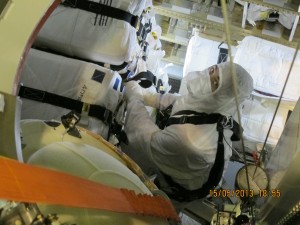
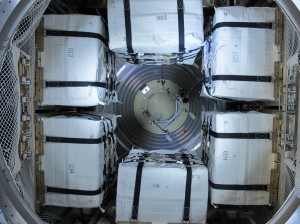

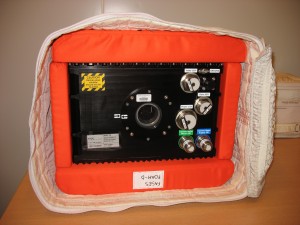
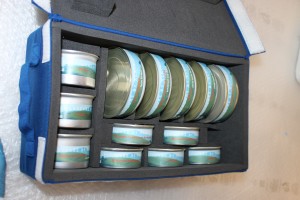
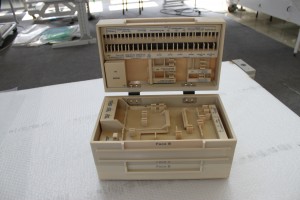
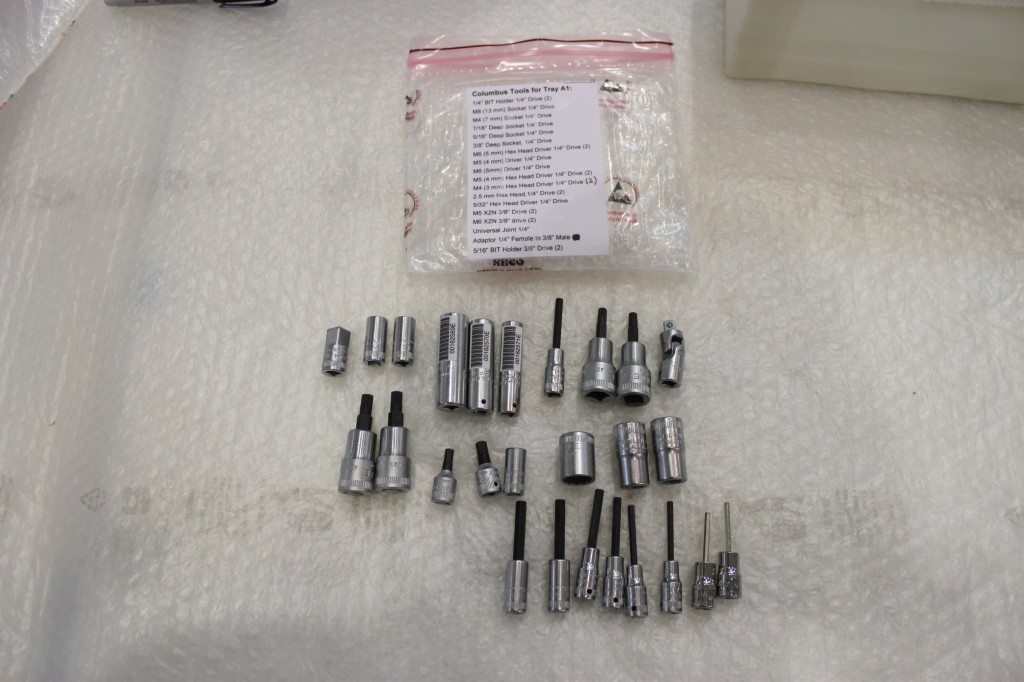
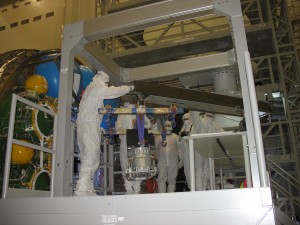
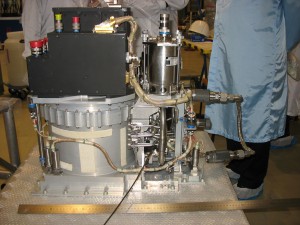
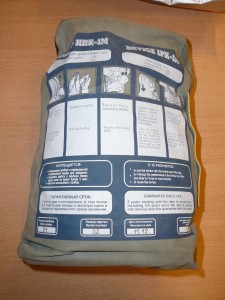
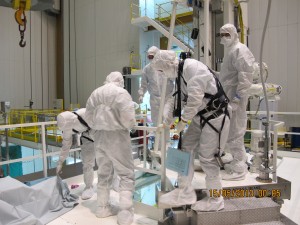
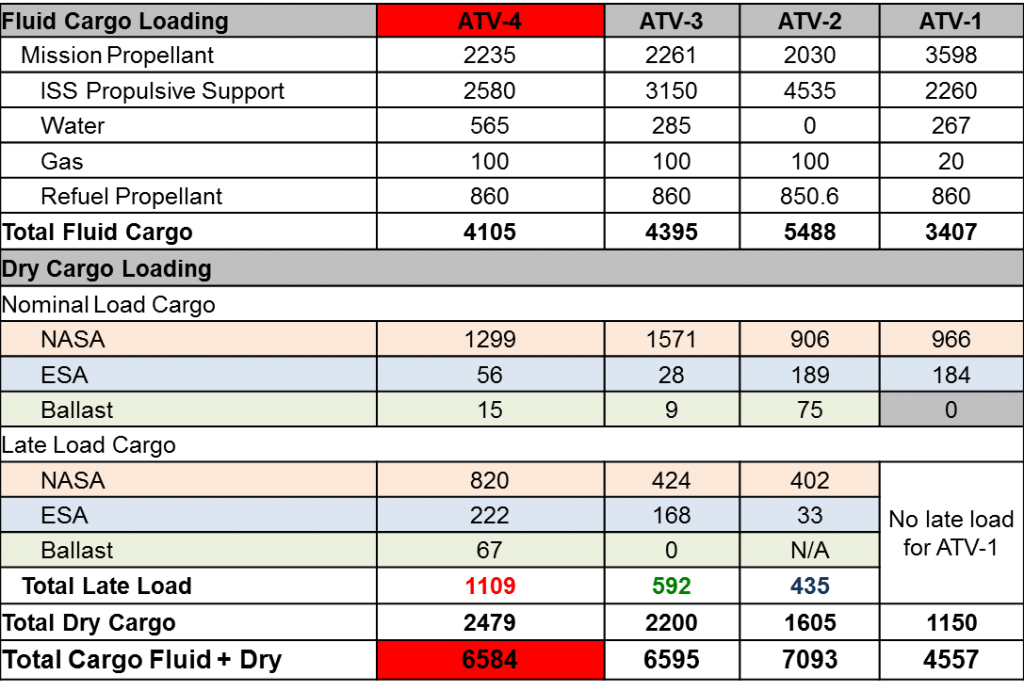

 Automated Transfer Vehicle page
Automated Transfer Vehicle page ATV blog archive
ATV blog archive
Discussion: one comment
no doubt it’s very informative and interesting article.